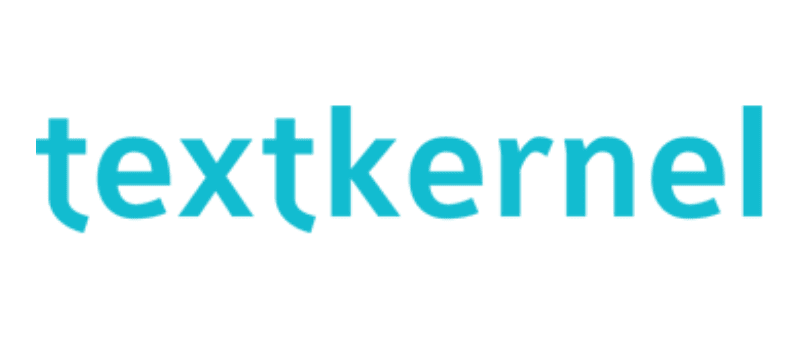AI tech for driving skills-based internal mobility
Hear about what pressures in the current talent landscape mean for your talent acquisition strategy and where data, digital, and AI play a part.
Understand how using AI can help organizations better understand their internal skills landscape, a necessary part of reconceiving resourcing tactics.
Get to know what strategies an IT-enabled HR team can implement to improve their internal mobility opportunities and success stories.



With external talent market pressures at record highs, many organizations are beginning to look internally. To do this in the best way requires a deep understanding of what job roles, professions, and skills look like within a business. Here, data and AI can play a leading role.
To understand how to utilize this digital approach, UNLEASH shares a new webinar chaired and hosted by Jon Kennard, Editorial Content Manager at UNLEASH with Stephan Menge, Vice President Sales for Europe at Textkernel and Grant Telfer, Sales Director UK & Ireland at Textkernel.
They discuss how to circumnavigate current applicant-vacancy mismatches, and (often) poor organizational understanding of what skills they already have, with automated technology that can underpin both present and future talent strategy solutions.
Watch on-demand to:
- Understand how AI can free up time and create efficiency for individuals and HR alike.
- Get to know more about how automated technology and AI can give businesses data to help them make the right decision on whether to automate.
- Learn what a precision, ‘selfie’, next-step approach to talent management can deliver.
It’s important to have an accurate analysis as the base for making decisions.
Stephen Menge, VP Sales for Europe, Textkernel
Data can illuminate and improve
To understand how to improve talent strategy, it’s essential to first get a grasp of where the difficulties lie. Here is where data comes into its own. Firstly, data shows that no matter where a business operates – be it Asia, Europe, or the US – a top CEO concern is the current labor shortage. Coupled with this are increased numbers of job postings which show no sign of slowing down. To intensify the recruitment issue, it appears that the job market for recruiters themselves is also hotting up as companies seek to get hold of those who are best at getting hold of in-demand talent. For businesses experiencing this, it can feel like they’re stuck between a rock and a hard place but at least knowing this allows them to tackle the problem at hand.
It isn’t just macro global trends that data can help with. As explained by Menge, aggregated job market data can help organizations see what the most sought-after top skills are. This can indicate to organizations what skills they might need – the most in-demand skills are one indication of where the industry might be going – and where most competition is likely to be. For example, in the UK, it is likely that, according to Textkernel market data, businesses will be fighting over candidates with in-demand soft skills like good communication, self-motivation, and the ability to work well in a team.
Data can also highlight trends that businesses might not even know they needed to know, such as how company size might impact the skills a business might be going after. Similarly, data can add nuance to a company recruiting strategy. For example: whilst a company might use headlines taken from datasets to understand that it needs agile skills, drilling down into that data might show this is a more desirable skill for those it wants to hire into its IT department rather than its HR department.
Recruiting data: It’s just like soccer!
So, where does this data go next? Top-level soccer teams use data to create profiles of the skills and capabilities most needed for top performance in a specific role. It’s a necessary part of performance management and recruitment strategy with so much competition between top clubs. And, as Menge described in the webinar, this allows them to understand whether they need to look internally to upgrade skills or look externally. By understanding the critical skills needed for success in a given role, teams are then able to match into it. If organizations engage in this behavior over the long term, too, also measuring things like salary, then can see how remuneration and also future skillsets might evolve, too. This can keep them ahead of those who’re fighting for talent with.
Indeed, as Menge explained, professional soccer is no longer about recruiting a player only because they performed well in a similar position at another club. The corporate world has to think like this, too. They have to get beyond job titles and past experience and look at skills an individual might have and how that might fit the skills profile they already own within their own workforce. This could also save them on financial outlay: understanding how skills apply to roles might allow for internal development rather than recruitment.
This is, as Telfer added, perhaps where work needs to get to: a place where roles are less specified and the right people with the right skills profiles exist within an organization, be it through hiring or development, and are utilized for specific project work.
Getting from taxonomy to ontology
However, this application of data is only possible, Telfer laid out if an organization deeply understands the skills it has access to. Most organizations likely have a skills taxonomy (differentiating between technical skills, soft skills, language skills, and then specific subcategories beneath them) as well as a professional taxonomy, which groups roles into groups and classes i.e. a DevOps Specialist who broadly sits in the IT class.
Yet, getting skills and professional taxonomies to match up in a useful way, to inform best-in-class recruitment and internal development, is difficult. It’s something that organizations struggle with and can be a blind spot. This is where using a professional-skills ontology can be useful. Underpinned by data, it can show the relations between professions and skills within an organization, giving HR the ability to see gaps and potential lateral moves that they might not have access to otherwise. For example, it might allow a marketeer to enter into a non-marketing role because their skillsets and experiences align with what that specific role requires.
What data does HR actually need then?
To be able to head towards the above approach, HR needs to get back to basics and understand what data might have a use when it comes to trying to get towards this ontological approach.
Here, it would be useful to extract data from CVs, performance appraisals, letters of commendations, and vacancy posts, too. This is where AI can also have a role to play, too. By using AI, it might suggest what skills are implicit in specific roles, that HR might miss, and can help normalize and parse different experiences to give HR a clearer view of what information they have in front of them. This might allow HR to create an inventory of the skills it has, too; looking at what it has, where it needs to upskill people internally, and where it might need to go externally. It can also see how these choices interact with DE&I metrics, too.
This approach can also be reversed. If this data-driven, and AI-enabled, ontology approach is then brought together in something like a consumer-grade portal experience, individuals could upload their CVs and be given the chance to see an understanding of the skills they might not have themselves, as well as career and networking opportunities that might not have thought about following. And, if they’re not quite there yet, it can also show them the skills, training, and mentoring opportunities they might need to follow if they want to follow a different career path.
The upside of this utilization is that it creates efficiencies for HR and the business, too.
Watch On Demand
"*" indicates required fields
Contact Us
"*" indicates required fields
Partner with UNLEASH
"*" indicates required fields
